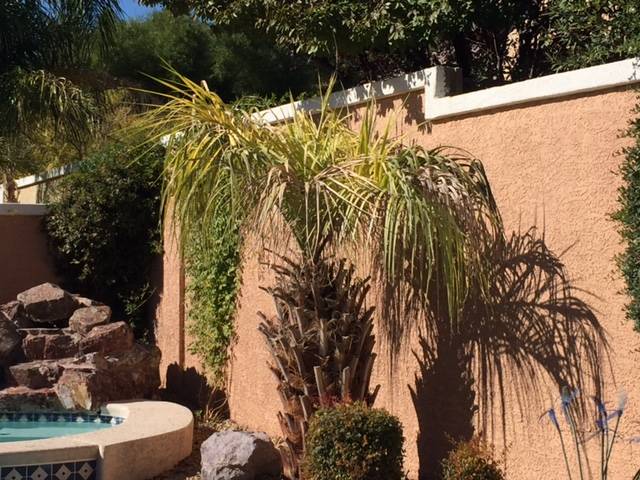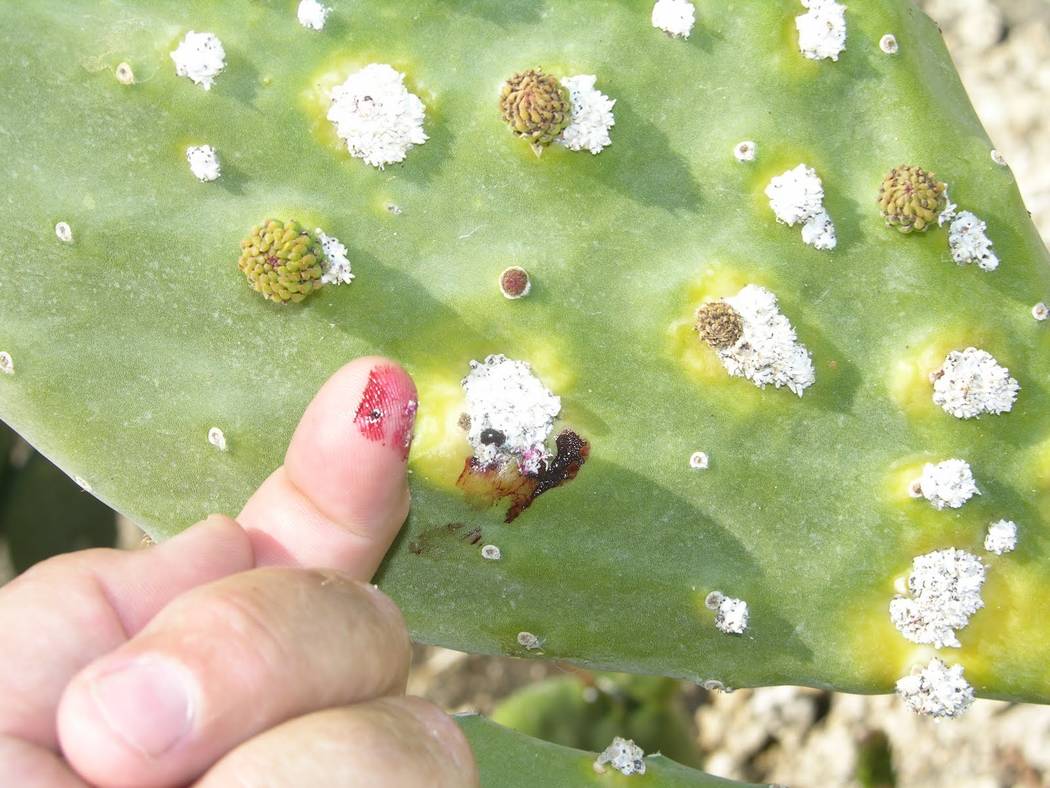Prune fruit trees when leaves drop
Winter fruit tree pruning starts as soon as leaves drop from the trees. It’s easier to see the branching structure of the tree — I call it the tree’s “architecture” — after the leaves are gone. This is also the time for the major pruning of landscape trees and shrubs.
Palms are pruned after new growth and flowering in late spring or early summer and coinciding with flowering and seed production. Removal of flowers and seed at the same time reduces palm tree litter.
Speed up leaf drop by shutting off the water. This puts them under a little bit of stress, which speeds leaf drop. Turn the water back on when the leaves begin to turn color.
Prune fruit trees any time in December and January. Reserve grape pruning for the end of February. Roses are traditionally pruned in January.
Fertilizer applications to most fruit trees, landscape trees and shrubs is done in mid-January and into February. If you see buds swelling on branches, fertilize the trees.
Lawns, annual flowers, vegetables and specialty plants such as roses are fertilized three to six times a year, depending on your expectations and budget.
Q: Is there any way to save my pindo palm?
A: Looking at the picture, this is very poor growth on this young palm, and most of the center leaves are yellow. I am guessing this palm is growing in soil covered by rock and perhaps was not planted properly.
The soil, after a few years, reverts to its desert origins; the chemistry of the soil changes, and plants have trouble finding available nutrients.
Perhaps the palms are watered too often and the soil is not given enough time to drain. This drowns the roots, suffocating them.
Mixing compost in the soil at the time of planting is important. It opens the soil, improves drainage and provides nutrients.
Now on to watering. I believe in giving plants plenty of water when they need it and not giving them tiny sips of water daily. Giving tiny sips of water is a “Hail Mary” attempt at landscape irrigation.
A young palm a few years old should get 10 to 15 gallons each time it’s watered. This time of year, watering once a week should be enough.
Even if yellowing is caused by watering too often, it can be corrected with liquid fertilizer sprayed on the leaves. The problem is not knowing which nutrients are causing the problems.
Use a shotgun approach when applying fertilizer sprays to the leaves. Products such as Miracle Gro, Ferti-Lome and Jobes each have a line of powdered fertilizers that can be mixed in water and sprayed on the leaves. Look for a smorgasbord of nutrients listed in the fertilizer.
Use distilled or RO water and not tap water. Add a teaspoon per gallon of liquid baby soap or Castile soap and foliar iron to the mix. Spray the fronds on top and bottom until they begin dripping. Repeat this spray two or three times a week apart.
Take two 1-cubic-foot bags of compost and apply it to the soil beneath the palm. Do this once a year or replace the rock under the palm with wood chips. This helps improve the soil over time.
Do not water palms daily. Water them like you would any other landscape tree.
Q: I have small white nodules growing on my Indian cactus. Are they harmful? If so, how do I get rid of them?
A: I think you are talking about cochineal scale on the Opuntia or beaver tail cactus. This scale insect produces a white, fluffy mass on the pads on top of itself for protection. This insect is feeding underneath this white mass. Rubbing these white masses lightly with your finger, you find a royal purple color staining it.
These insects can devastate a cactus if not controlled.
First, control the ants. Ants pick up baby scale insects and transport them to pads that are underpopulated. These new pads are wide open pastures for scale insects to feed.
Cochineal scale populates pads quickly. The ants harvest excrement from scale insects to feed their colony.
Most ants are subterranean. One of the best methods I found to control ants is using a poison bait lightly sprinkled at the entrance to the colony. Usually, these ant holes in the ground are easy to find, but sometimes you must follow the ant trails to find them.
I use an ant bait manufactured by Amdro. Follow label directions precisely. When applied correctly, it kills the entire colony, including the queen, in less than 24 hours.
Scale insects suck plant juices from the pads and build their populations quickly. Ants help them spread faster.
To remove white fluffy masses, spray the pads with a strong stream of water using a spray or sweep nozzle. This knocks the white fluffy covering off but doesn’t kill the insect hiding underneath it.
They soon repopulate the pads. In the summertime, this could be weekly. In winter, perhaps monthly.
After spraying the pads with water, use organic or conventional insecticides to prevent scale insects, called crawlers, from repopulating the pads. Organic insecticides do not stay in the environment long, so spray them more often than conventional insecticides.
Useful organic insecticides include Neem oil, soap sprays and other plant-based oils. Apply soaps and oils the day after spraying the pads. Reapply organic insecticides often. Organic insecticides I mentioned are total killers; they kill any insect sprayed, so direct your sprays accordingly.
Conventional insecticides last longer but are tougher on the environment. Useful conventional insecticides are systemic and applied to the trunk or soil. The poison moves into the pads from the point of application. Spray as soon as you see the cotton balls start to form.
Q: I have 15-year-old 20- to 30-foot pines on a half-acre. They suffered during the heat this past summer. After your advice, I am doubling the amount of water and hosing off the needles once a week. How long is the recovery time using vitamins?
A: I am not a big fan of applying vitamins such as Super Thrive. Some people swear by them. It can be cheap insurance, though, if you’re not sure. Your call on that one.
Washing the needles of pines is not necessary. It is true of Italian cypress because they tend to get spider mites. Pines do not.
They might need more water than 15 gallons. Play that by ear by watching the new growth next spring and early summer. You should get at least 12 inches of new growth every year and not experience severe needle drop during the hot months. Those are indicators the tree is not getting enough water.
Once you find the right amount of water (minutes and gallons), keep it consistent through the year. The amount of water they are given should not change much throughout the year. It’s like filling a gas tank.
Instead, change how often they receive the water. Water more often in the summer months. Winter months, water less often.
As plants get bigger, they require more applied water, not watering more often. Watering frequently with small amounts of water produces shallow roots and trees that blow over in strong winds.
You should see an improvement in the first half of next year. Nothing this year.
Bob Morris is a horticulture expert and professor emeritus at the University of Nevada, Las Vegas. Visit his blog at xtremehorticulture.blogspot.com. Send questions to Extremehort@aol.com.



















